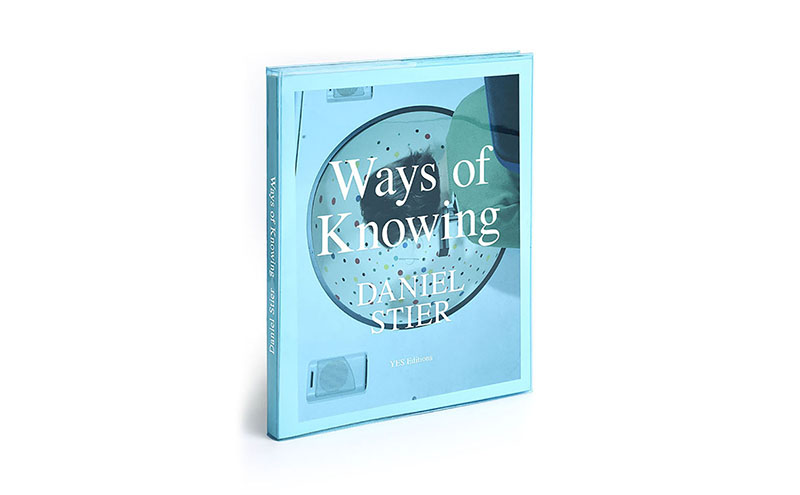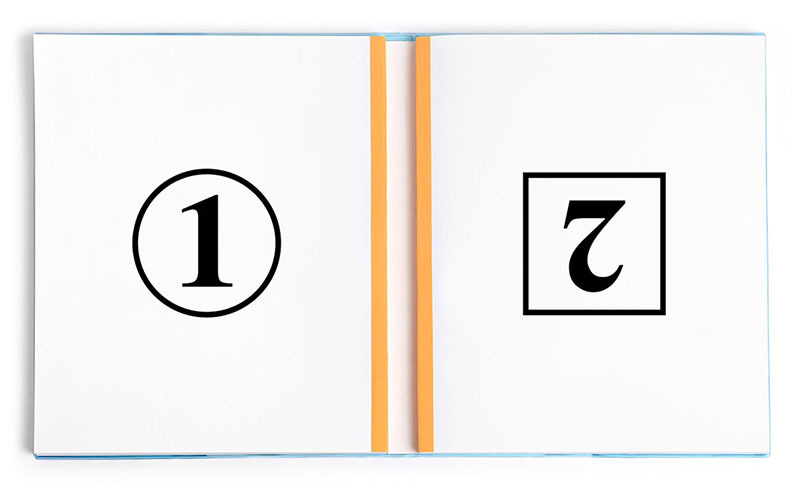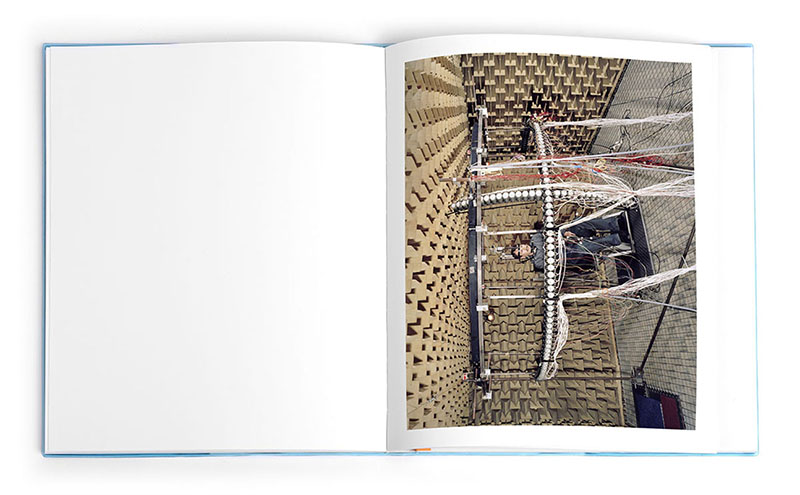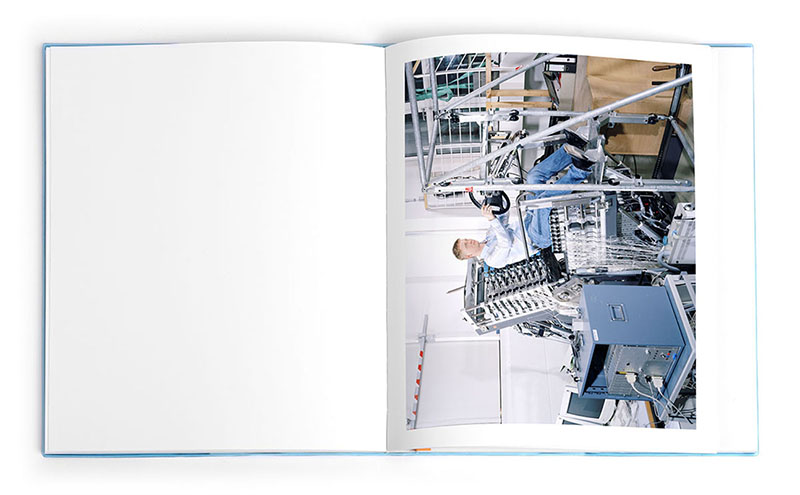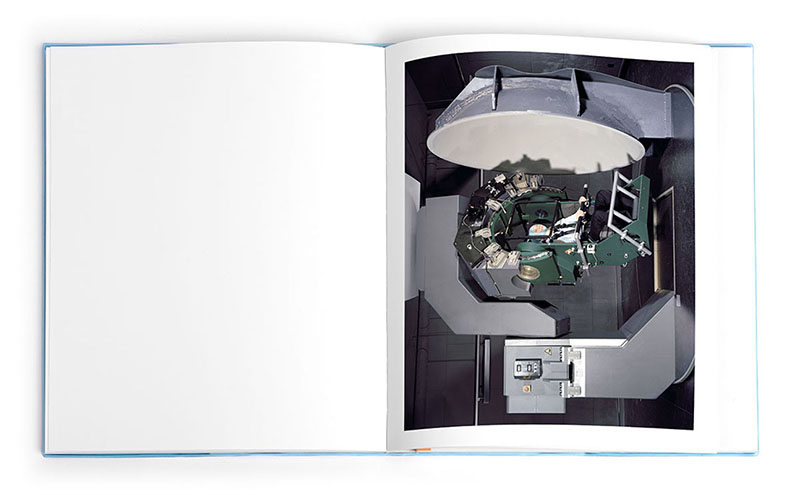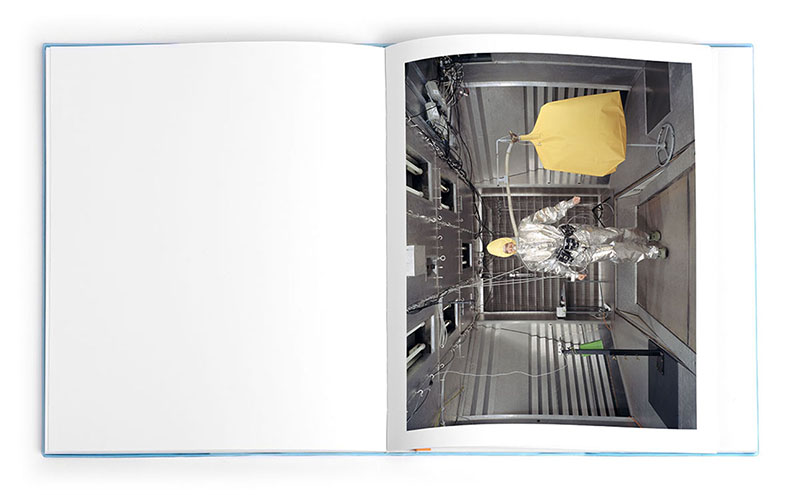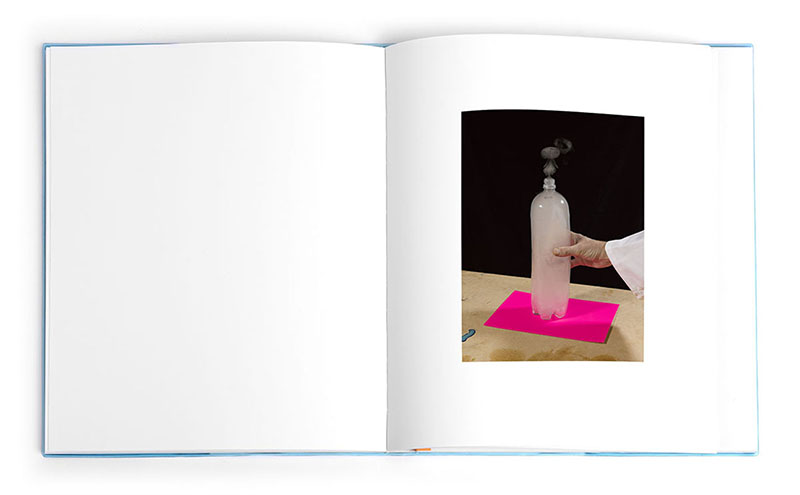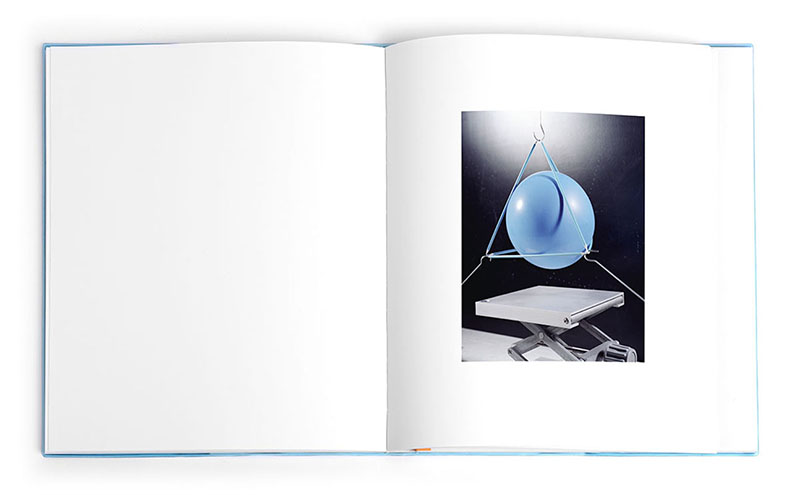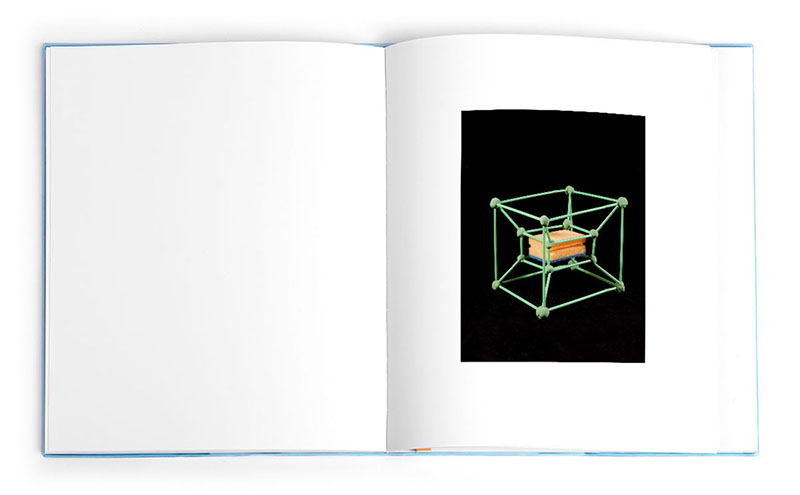Daniel Stier – Ways Of Knowing
All spreads courtesy of the artist
WAYS OF KNOWING by Daniel Stier (YES Editions, 2015), BUY
We take for granted that science is built on a foundation of perpetual doubt. Scientific truths are only true until they are disproven. New evidence supplants the old and temporary truths emerge. At the same time, the paths to these truths are often complex and difficult to understand for laypeople. While this is true of many specialisd fields, the sciences are particularly susceptible to mystification by artists. We’re simultaneously bewitched by the unknown and voyeuristically driven to reveal what is often unseen. Separated into two parts, Daniel Stier’s Ways of Knowing pairs clinically shot images of scientific machines being used by humans with absurdist experiments and optical illusions the artist has created in his studio. Playful and parodic, Ways of Knowing explores the complex paths we take to learn about the world while also celebrating the strange beauty of tools, objects, and machines we use to get there.
A middle-aged white man with a moustache sits in an anechoic chamber on a metal chair. A headrest supports his chin and forehead, and he is surrounded by what appear to be a series of small speakers on both a vertical and horizontal axis. White cords snake outward in thick bands along the edge of these lines and disappear out of the frame. Taken at a lab at the Ruhr Universität Bochum, we have no idea what is being done to the man, or what is being tested. The first section of the Ways of Knowing is devoted entirely to images like this one—men and women at the mercy of machines, being tested for something. The second section of the book is comprised of still-lives and experiments of one sort or the other: a man’s hand holds a plastic bottle filled with smoke, a balloon hovers in a triangle of cords above a small platform, and pool of white liquid rests on a light blue gridded surface. Although some images reference known optical illusions or tests, the purpose of many of the images remains obtuse. Then again, mysteries are in the eye of the beholder.
If the strange machines that fill Part 1 are one way of knowing, the still-lives and experiments in Part 2 are gestures towards other equally intangible forms of knowing. Both rigorously isolate sensorial or physical experience or playfully test possibilities. Whereas the simplicity of the still-lives almost seems to parody the baroque machines, the machines suggest the path to knowledge is more complex and equally absurd. As Geoff Manaugh recently wrote about the lab images, “these are not just one-off scientific experiments but spatial prototypes: rigorous attempts at building and establishing a very particular kind of environment—a carefully calibrated and tuned zone of parameters, forces, and influences—then exposing people to those worlds as a means of testing for their effects.” As an artist, Stier is clearly interested in drawing parallels between artistic labor and the elaborate machines and constructs of science. Divorced from their function, the machines and still-lives appear like interactive sculptures, clever arrangements or performances.
Ways of Knowing is divided into two volumes: Part 1, which deals with scientific machines and labs, and Part 2, which contains the still-life experiments. Although physically connected by an open spine, flipping the book over allows the reader to access Part 2. Only the numbered parts seem to suggest a beginning or sequence. This simple design solution not only allows for two different covers, but also for two discrete but linked books to be housed in one volume. Like an möbius strip, this dual format suggests that these two ways of knowing are flip sides of one coin—both equally absurd and potentially revealing when closely scrutinized. Although Part 1 concludes with an index identifying the lab where each image is made, we’re still left without any information about the purpose of the odd devices. The same is true in Part 2. If there is a purpose behind each experiment, it is never stated. Each book concludes with a short essay—one by a research scientist, Pedro G. Ferreira, and the other artist and writer, Daniel Jewsbury—that reflect on epistemology and the scientific process.
Despite this clever design, it feels like a mistake to separate the two bodies of work. When seen together the images begin to feel a bit redundant. The people and machines are shot from the same distance, centered in the frame and similarly lit for a uniform commercial appearance. This is also true of the second part, which focuses on a series of still-lifes, optical experiments, and sensory tests. Mixed together, the work might succeed beautifully, but it is hard to tell. Paging through the book, I found myself imagining visual connections and suggested meanings between the mute people trapped in machines and the odd makeshift experiments in the second volume. Reduced slightly and mixed up, the book might tell an equally compelling but richer story. I also found the actual layout a bit conservative given the smart design of the overall book. Each image is presented on a single spread facing a white page, which enhances the clinical nature of the work, but downplays any visual connections that might occur between the images.
In some respects, Ways of Knowing is testament to the continued influence and bowdlerization of Mike Mandel and Larry Sultan’s seminal work Evidence. Whereas Evidence is messy, odd, and vexing, in Ways of Knowing we’re left with labs, machines, and experiments. While Mandel and Sultan’s work is certainly not the only influence, Stier mimics their similarly mute rendering of otherwise simple evidentiary or scientific images. The still-lives are perhaps the more familiar of the two image sets as innumerable recent artists have begun working in a similar vein—i.e., creating intentionally obtuse configurations that mimic scientific experiments, flirt with mystical conjurations, or simply rehearse nonsensical formal juxtapositions.
In the end, it’s not entirely clear that mystery is Stier’s intent or if the work is meant to be parodic. While there is no explicit critique in the work, Stier does seem to relish the absurd beauty of science. Like art, science often leads us to uncertain truths that need constant testing. We return to and keep making art not merely to be dazzled and confronted, but for known or unknown truths to be affirmed. The truths may come undone over time or in the face of new facts or art, but there is pleasure and beauty in testing the results and bringing those truths to life.

